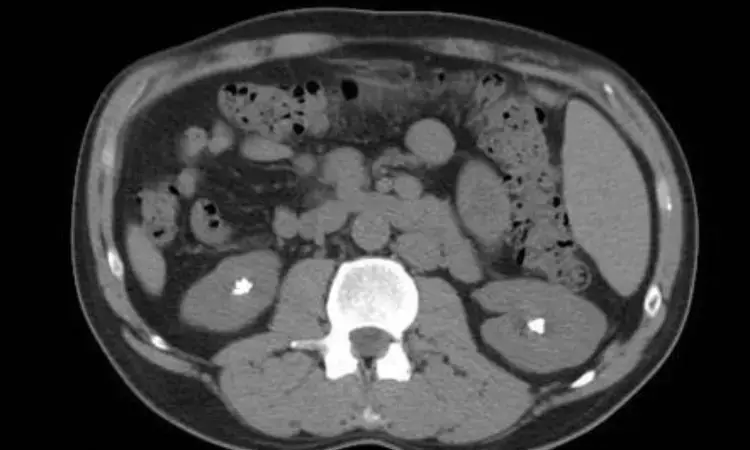- Home
- Medical news & Guidelines
- Anesthesiology
- Cardiology and CTVS
- Critical Care
- Dentistry
- Dermatology
- Diabetes and Endocrinology
- ENT
- Gastroenterology
- Medicine
- Nephrology
- Neurology
- Obstretics-Gynaecology
- Oncology
- Ophthalmology
- Orthopaedics
- Pediatrics-Neonatology
- Psychiatry
- Pulmonology
- Radiology
- Surgery
- Urology
- Laboratory Medicine
- Diet
- Nursing
- Paramedical
- Physiotherapy
- Health news
- Fact Check
- Bone Health Fact Check
- Brain Health Fact Check
- Cancer Related Fact Check
- Child Care Fact Check
- Dental and oral health fact check
- Diabetes and metabolic health fact check
- Diet and Nutrition Fact Check
- Eye and ENT Care Fact Check
- Fitness fact check
- Gut health fact check
- Heart health fact check
- Kidney health fact check
- Medical education fact check
- Men's health fact check
- Respiratory fact check
- Skin and hair care fact check
- Vaccine and Immunization fact check
- Women's health fact check
- AYUSH
- State News
- Andaman and Nicobar Islands
- Andhra Pradesh
- Arunachal Pradesh
- Assam
- Bihar
- Chandigarh
- Chattisgarh
- Dadra and Nagar Haveli
- Daman and Diu
- Delhi
- Goa
- Gujarat
- Haryana
- Himachal Pradesh
- Jammu & Kashmir
- Jharkhand
- Karnataka
- Kerala
- Ladakh
- Lakshadweep
- Madhya Pradesh
- Maharashtra
- Manipur
- Meghalaya
- Mizoram
- Nagaland
- Odisha
- Puducherry
- Punjab
- Rajasthan
- Sikkim
- Tamil Nadu
- Telangana
- Tripura
- Uttar Pradesh
- Uttrakhand
- West Bengal
- Medical Education
- Industry
CT or ultrasound, which is better for kidney stone diagnosis? Study provides insights

California: Ultrasound may be the better imaging tool in the emergency department (ED) for diagnosing and evaluating kidney stones than computed tomography (CT), a research letter published in JAMA Internal Medicine has stated. There is not much evidence supporting the superiority of CT for this indication.
"Computed tomography is the dominant imaging tool in the ED for evaluating and diagnosing kidney stones, but it may not be the best," Calyani Ganesan, Stanford University, Palo Alto, California, and colleagues wrote in their study.
Flank pain due to urinary stone disease (USD) is a common presentation in the ED in the US. The American Urological Association recommends CT as the favorable initial imaging study for suspected USD. For this purpose, CT has become the dominant imaging modality used in the ED.
Smith-Bindman et al., in 2014, reported results from a multicenter randomized clinical trial comparing ultrasound with CT in patients presenting to the ED with suspected USD and showed that the first strategy of ultrasonography was not tied to more serious adverse events, delays in urologic procedures, or missed high-risk diagnoses. Also, the ultrasonography-first approach has the potential advantage that it exposes patients to lower cumulative radiation doses. Now, there is consensus among representatives from the American College of Radiology, AUA, and the American College of Emergency Physicians that supports ultrasonography for the initial evaluation of suspected uncomplicated USD. Whether practice patterns have changed needs to be determined by more recent studies.
Ganesan and the research team aimed to explore imaging trends for suspected urinary stone disease through a study that included data from the Nationwide Emergency Department Sample. They compared ED visits during which patients did not have imaging to those during which patients underwent CT alone or ultrasound alone. The patient cohort comprised 7.5 million unique ED visits for suspected kidney stones.
The study demonstrated the following findings:
· During the study time frame, the percentage of visits to the emergency department for a suspected urinary stone disease that did not include any imaging fell.
· The percentage of visits during which patients underwent CT increased by more than 50%, while the use of ultrasound increased only slightly.
More research needs to be done to shift the proverbial need among ED physicians when using ultrasonography rather than CT for kidney stone diagnosis.
The researchers conclude, "updated guidelines and greater awareness of evidence may increase adoption of an ultrasonography-first strategy. These changes may decrease radiation exposure to patients and limit health care costs."
Reference:
Ganesan C, Stedman MR, Liu S, et al. National Imaging Trends for Suspected Urinary Stone Disease in the Emergency Department. JAMA Intern Med. Published online October 31, 2022. doi:10.1001/jamainternmed.2022.4939
Dr Kamal Kant Kohli-MBBS, DTCD- a chest specialist with more than 30 years of practice and a flair for writing clinical articles, Dr Kamal Kant Kohli joined Medical Dialogues as a Chief Editor of Medical News. Besides writing articles, as an editor, he proofreads and verifies all the medical content published on Medical Dialogues including those coming from journals, studies,medical conferences,guidelines etc. Email: drkohli@medicaldialogues.in. Contact no. 011-43720751


